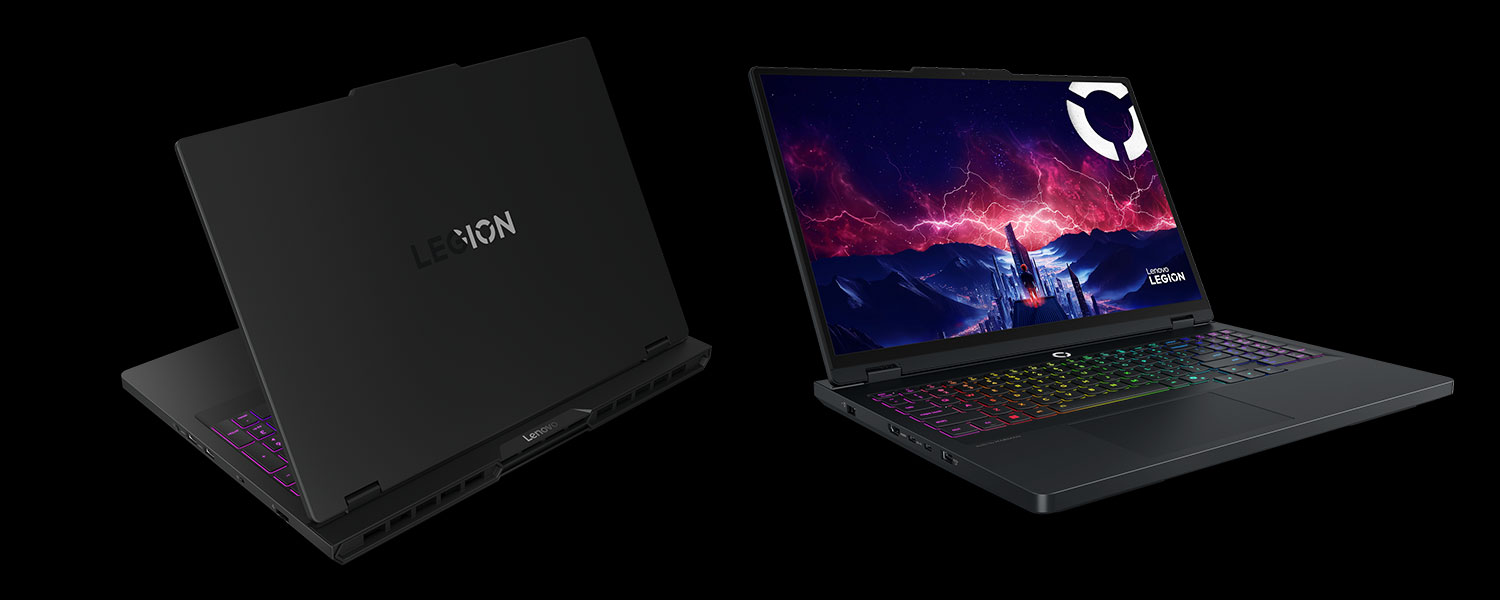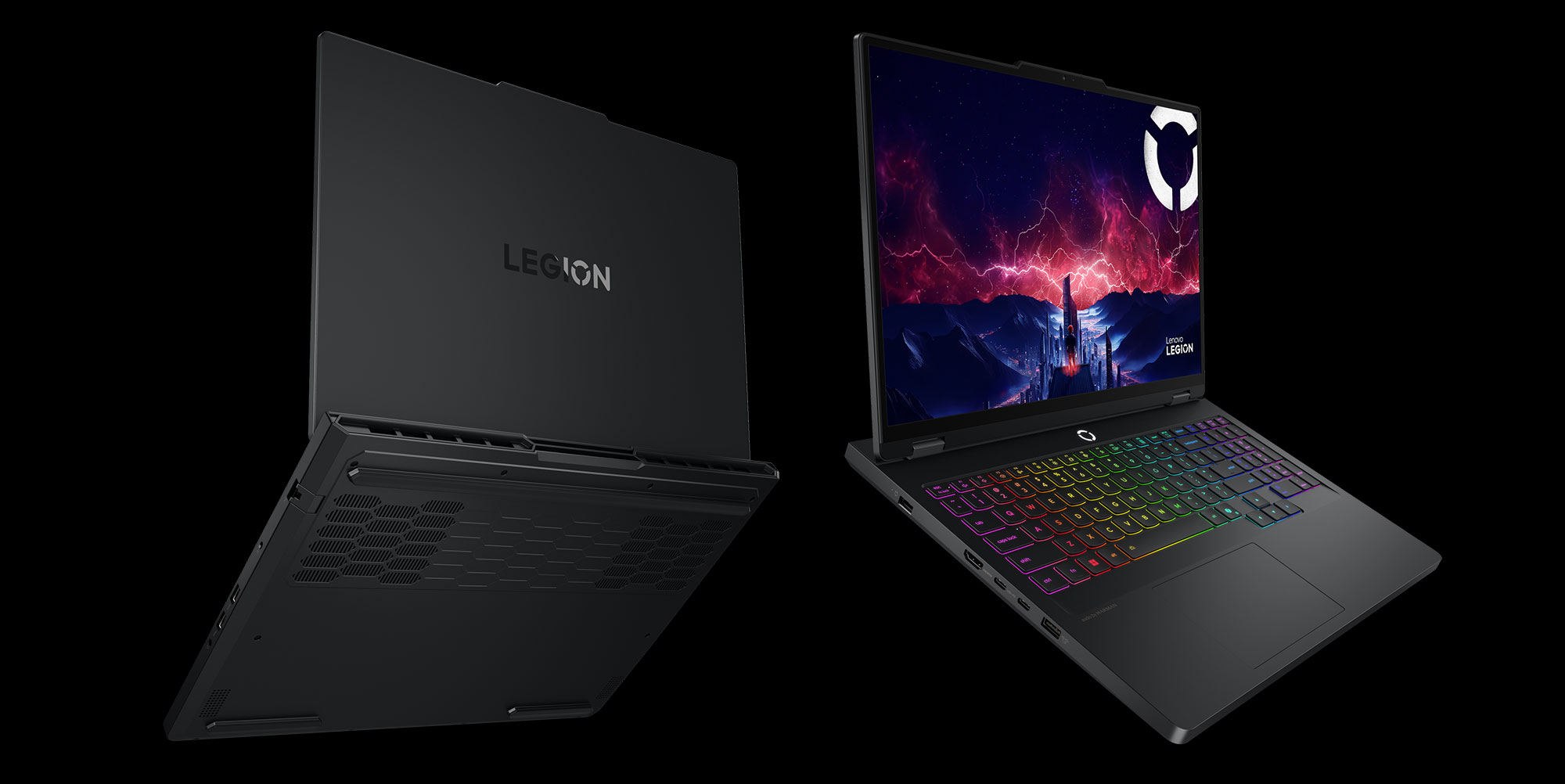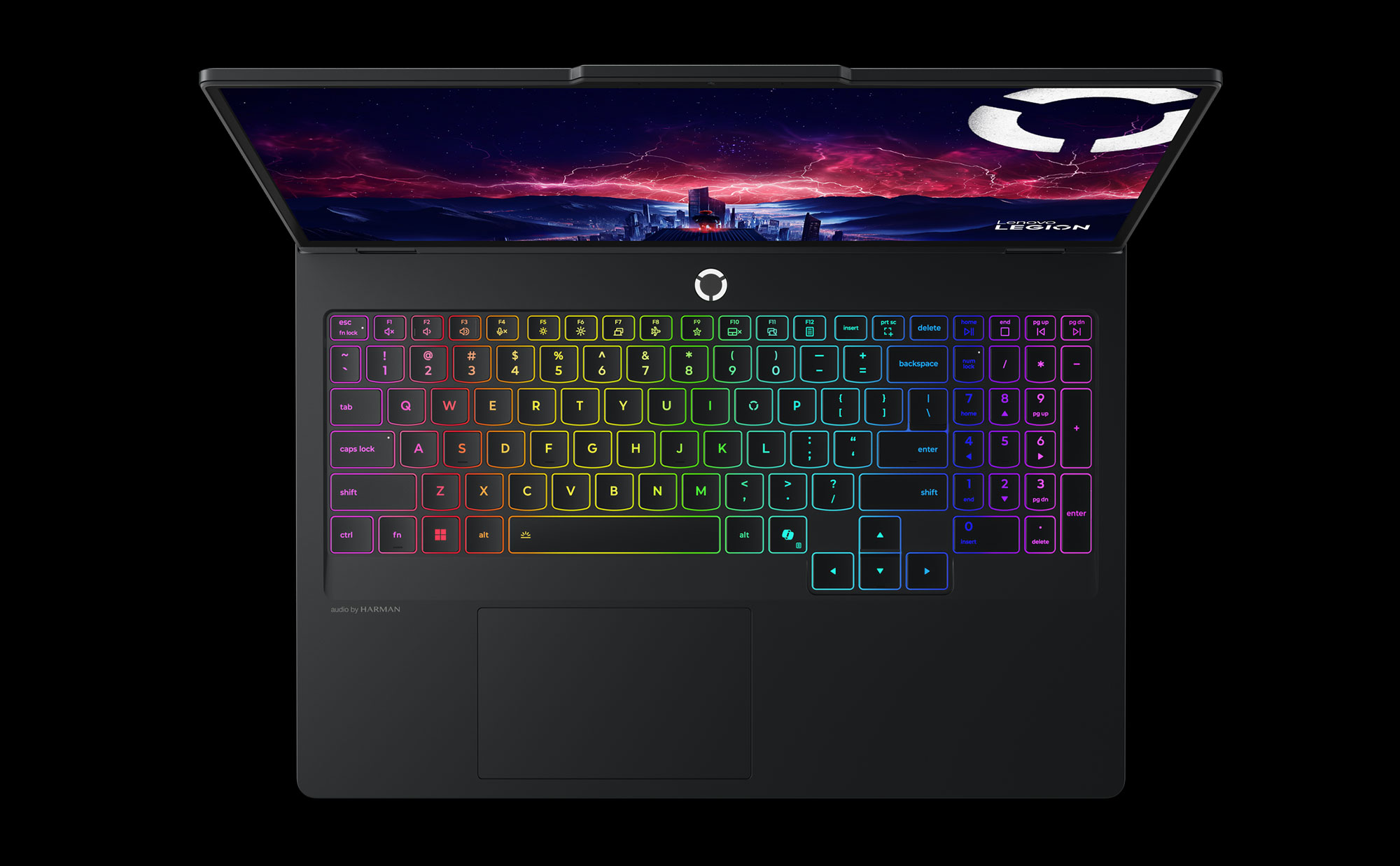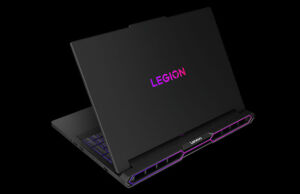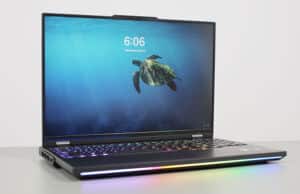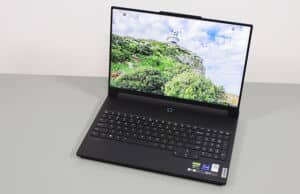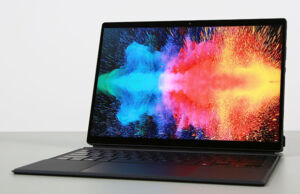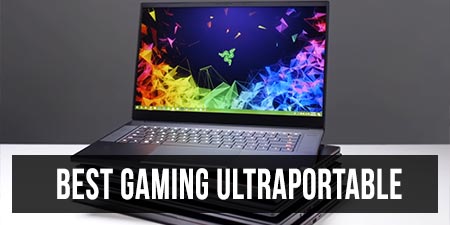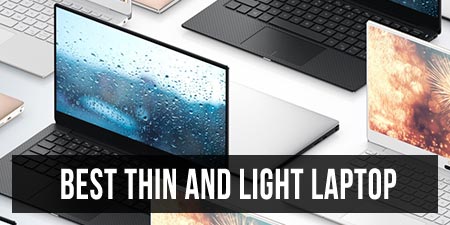Table of Contents
Alongside the Legion Pro 7i series, Lenovo are also updating their midrange Legion Pro 5 lineups for 2025.
Much like the Pro 7s, these 10th generation 2025 Legion Pro 5 models are brand new chassis designs, but only with mid-tier GPU specs and without some of the perks offered on the upper-tier models.
You can opt between an Intel Arrow Lake HX configuration with up to RTX 5070Ti graphics or an AMD Fire Range variant with up to RTX 5070 graphics.
Both are implemented in the same chassis and available with similar features, including an updated keyboard and updated IO placement, as well as an OLED display. In fact, Lenovo decided on going with OLEDs on their entire range of 2025 Legions, both the full-size Pro models and the thinner-and-lighter Legion 7i and 5i models.
There are a handful of aspects setting apart the Legion Pro 5 lineups from the upper-tier Legion Pro 7s, and we’ll discuss them below.
But first, here are the specs of the two subseries of 2025 gen 10 Legion Pro 5s.
Lenovo Legion Pro 5i gen 10, Pro 5 gen 10
| Lenovo Legion Pro 5i (Intel, Gen 10, 2025) | Lenovo Legion Pro 5 (AMD, Gen 10, 2025) | |
| Screen | 16-inch, 16:10, glossy, non-touch, OLED QHD+ 2560 x 1600 px , 240 Hz 1ms, 500 nits SDR, 100% DCI-P3 colors |
|
| Processor | Intel Arrow Lake-HX, up to Core Ultra 9 275HX, 8PC+16Ec/24T, up to 5.3 Ghz |
AMD Fire Range HX, up to Ryzen 9 9955HX, 16C/32T, up to 5.4 Ghz |
| Video | Arc + up to NVIDIA GeForce RTX 5070Ti 12GB 140W, with MUX, Advanced Optimus, and GSync |
Radeon + up to NVIDIA GeForce RTX 5070 8GB 115W, with MUX, Advanced Optimus, and GSync |
| Memory | up to 32 GB DDR5-6400 (2x DIMMs) | |
| Storage1 | 2x M.2 2280 PCIe gen4 SSD slots | |
| Connectivity | WiFi 7, Bluetooth 5.4, Gigabit Lan | |
| Ports | Left: DC-In, HDMI 2.1, 1x USB-C (with Thunderbolt 4 – Intel only), 1x USB-C 3.2 with PD, 1x USB-A gen2 Right: 2x USB-A 3.2 gen1, RJ45, audio jack, eShutter button |
|
| Battery | 80 Whr, 245 W power adapter, USB-C charging up to 140W | |
| Size | 364.4 mm or 14.34” (w) x 268 mm or 10.55 (d) x 21.7 – 26 mm or .85″ – 1.04” (h) | |
| Weight | from 2.53 kg (5.59 lbs) + charger | |
| Extras | clamshell design with 180-display ??, updated ColdFront cooling, 24-zone RGB backlit keyboard with NumPad, 1.6 mm travel, PTP clickpad, 2x speakers, 5MPx webcam with eShutter, available in Eclipse Black |
|
Design and functionality
The Pro 5s and the Pro 7s share a similar chassis design for this generation, with an all-black metal casing, ports lined on the sides, and the entire rear edge reserved for cooling. That’s quite a different approach from what Lenovo offered on past Legion Pro iterations in recent years.
However, the midrange Pro 5s are simpler designs, without any of the RGB elements found on the Pro 7i. The LEGION branding on the lid is non-RGB either, but a chromed engraving instead.
Functionally, though, the two series are quite similar, with most of the important ports lined on the left side and what looks like an all-black metal construction. I’ll need to confirm where the main deck on the Pro 5s is metal as well, as the previous gens settled for plastic. I’ll also need to check the screen angle for this series, and the hinge design seems to suggest the option for 180 opening, but that might not be the case.
Speaking of, the display implements a modern 16-inch OLED panel, with excellent specs and contrast and color reproduction. I wasn’t that surprised with this panel being offered on the Pro 7i, but I didn’t quite expect to see it on the mid-range Pro 5s as well.
The keyboard on the Pro 5 models is a little different than the one in the 7s, with a similar layout and similar travel and keycaps, but without per-key RGB control. Instead, 24-zone control is offered on the software. That’s not something I’ve seen on other laptops, as most keyboards are either single-zone, 24-zone, or per-key RGB.
I’ll also quickly mention the IO, where the Intel variant has an edge with support for Thunderbolt 4.0 via one of the USB-C slots, while the AMD model only supports USB-C 3.2, so no USB 4.0. A minor detail, but something you might want to consider in your decision if you plan on using peripherals that would benefit from the speeds of Thunderbolt or USB 4.
Other aspects worth mentioning are the implemented 5MPx camera on this series, as well as the fact that you’ll only have to settle for dual bottom-placed speakers, without the extra tweeters offered with on the Pro 7 models.
Hardware and cooling
As mentioned already, Lenovo offer the Pro 5 series in two main variants:
- the Pro 5i built on Intel Arrow Lake HX processors (namely the Core Ultra 275HX) and up to an RTX 5070Ti 12GB GPU running at 140W TGP.
- the Pro 5 built on AMD Fire Range HX processors (namely the Ryzen 9 9955HX) and an RTX 5070 8GB GPU running at 115W TGP.
Lower-tier GPU options will be offered on both when available.
Much like with other brands, though, I find it weird that Lenovo are limiting the GPU selection available for the AMD model, as the Intel variants get a 5070Ti, while the AMD units are only specced up to a 5070 with less vRAM and lower power. Not sure what’s the performance difference between them, but I’d reckon it’s at least 10%.
On the CPU side, the Fire Range Ryzen 9 has an edge in sustained multi-core performance over the Arrow Lake counterpart. I’d expect 10-20%. And it might have an edge in workloads and games as well, although it’s worth noting that Lenovo went with the regular Ryzen 9 9955HX processor here and not with the 9955HX3D with X3D V-Cache, the one that’s truly meant to shine in games.
The other specs are fairly standard for a full-size laptop, with 2x memory slots, 2x SSD PCIe gen4 slots, and a mid-sized 80Wh battery. In comparison, the Pro 7i supports PCIe gen5 SSDs and bundles a 99.99 Wh battery.
As for the cooling on the Pro 5s, it’s a midrange dual-fan dual-heatsink implementation with a bunch of heatpipes, designed to support up to 200W of crossload power in sustained loads. That’s a fair bit less than the 240W TDP of the Pro 7i gen10, but at the same time higher than the 180W TDP settings of past Legion Pro 5 models. Given only mid-tier GPUs are available on this lineup, I doubt these will actually need to run at 200W in most applications and games anyway, which should translate in fair thermals and noise levels. We’ll test that thoroughly in our reviews, and especially test whether Lenovo were able to figure out how to keep internal heat away from the keyboard deck, an issue noticed on the previous Legion Pro models.
As far as availability and pricing go, these lineups are expected later in the year, around May and June 2025 (at least on the NA market), starting at $1399 for the Legion Pro 5 and $1499 for the Legion Pro 5i. That’s most likely for configurations with lower-tier Nvidia graphics that haven’t been announced yet, such as a 5060 or a 5050.
Not sure at this point whether the 5070 configurations will ship anytime soon here in Europe, but I’ll keep my eyes out for review units as soon as possible.
In the meantime, let me know your thoughts on these updates Legion Pro 5 models. I for one appreciate the revamped chassis and the inclusion of that beautiful OLED panel in a mainstream product, even if these features might impact the price competitiveness of this series to some extent.

